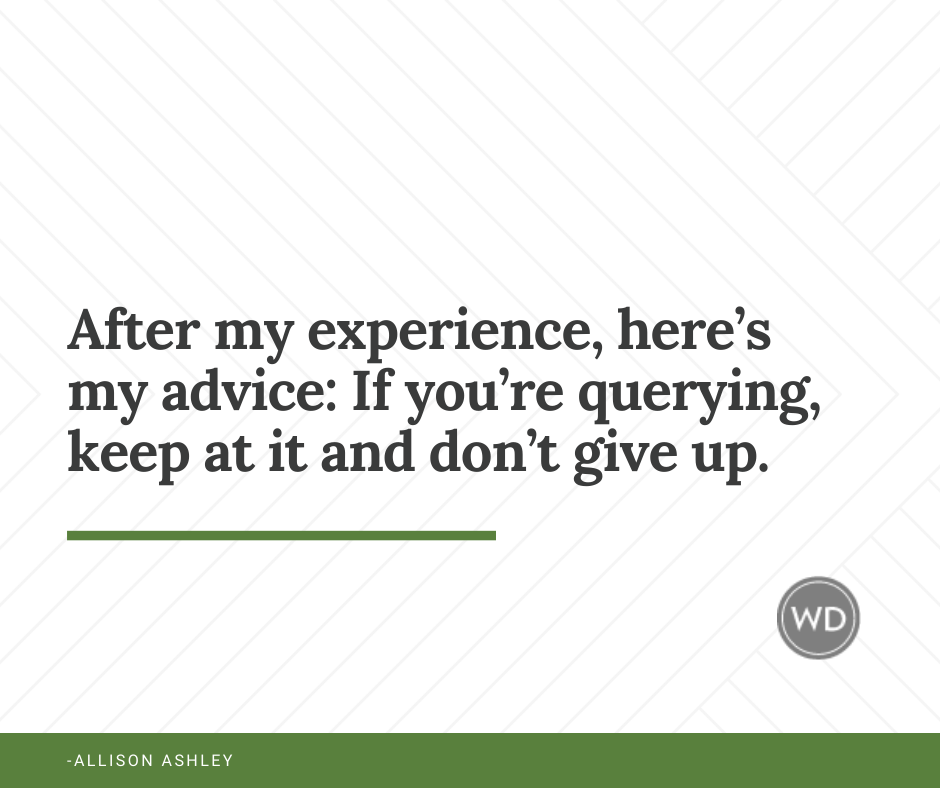How to Turn Rejection Letters into a Positive
Lessons in perseverance can come in unexpected packages. Learn how one writer found redemption through rejection. by Sue Fliess
I have the somewhat daunting task of organizing the lollipop fundraiser at my children’s school walkathon this year. You could say I represent the Lollipop Guild. So I call the local candy factory and inquire about how I can get my hands on 300 or so lollipops.
My business mind kicks into gear: Can I buy them wholesale? Do I get a discount if I pick them up? A perky woman on the other end of the phone informs me in a singsong voice that buying wholesale is “still pretty expensive.” But it turns out she’s the owner, having inherited the family business, and she kindly offers some insider advice: “Call me the morning you’re ready to make a trip to the factory, and I’ll set aside the day’s rejects for you.”
Yes, she calls them rejects.
Red flag! Are these lollipops unrecognizable as lollipops? Will I be the laughing stock of the Parent Teacher Association? Worried, I ask her, “What’s wrong with them? Are they misshapen and damaged?” Clearly, there must be some reason these lollies didn’t make the final cut.
“Not at all,” she assures me. “They’re actually perfectly good lollipops. All of them are very pretty and taste great. We reject them for a variety of reasons.”
My heart skips three beats and my hairline tingles with sweat. I’m having post-traumatic rejection disorder as my mind flings me sideways into my writing world. I’m reliving the opening of letter after letter from editors who gingerly (or not so gingerly) explained why my story didn’t make the cut: “We decline manuscripts for a variety of reasons; we’re sorry, but this one just wasn’t right for us.”
Whatever the reason, rejection is rejection. “REJECTED” may not be stamped on the letter, but that’s the only word I see.
Returning my attention to the call, I realize the woman is telling me that some lollipops are too big, too small, too thin or too thick. Some come off the line with insufficient swirls, lackluster colors or slightly skewed designs. Some are too long while others are too short. The list goes on and on.
Overcome with a magnanimity that surprises even me, I proclaim, “I will save your rejects!” And I vow to take these lollipops and give them a home.
My first book was rejected 24 times. My story may not have been too fat or too long, but I heard other reasons, including, but certainly not limited to: too slight; too sweet, not enough guts; we just bought a book like yours. The colors were skewed. It lacked swirl and sparkle. In essence, my story wasn’t right for their palates.
I’d pored over those letters, some personalized, some form, some not even getting the title of my story correct, as if some kind of manuscript rejection wizard might leap from the paper and tell me what I’d been doing wrong, reveal the key to publication. To vent my frustration, I’d punished the letters—sending them straight to the three-hole puncher without dessert, and burying them in my not-so-thin Manuscript Rejection Binder (for which my spouse nearly had me committed).
But the binder had come to serve a deeper purpose. Eventually, instead of clicking my sequined heels together and wishing for home, I decided to view these rejections as poppies in the field, slowing me down but for a brief moment before waking me up and kicking my sorry behind back onto the path. No wizard appeared, but the rejections spoke to me in a way. They gave me the nerve to keep going. And I believed in my story. Even though I may have thought it was perfect the way it was, I sat down and made it better. I continued to submit that manuscript, determined to reach the Oz of the writing world: publication.
Thinking back to that binder makes me even more curious about the rejected lollies. The next morning, I call the factory and make the drive to the outskirts of San Jose to pick up my first batch of rejects. And are they ever glorious! Too long, too short, too swirly, too plain, too blasted with color, too void of color, too thick, too thin. I devour their random sparkle, their irregularity, their courage. I suck in their bravery. These lollies popped off the assembly line screaming, “I am different, and I am beautiful!”
I pay the young woman from the phone and she helps me carry more than 300 lollipops to my car. From the back of the factory, her mother smiles and waves to me. “Take good care of them,” she says. I nod. The kids at my boys’ school will love them.
The lollipops are amazing, each in its own way. Sweet, full of charm, and waiting to be opened by a child with a squeal of delight. They are all dazzling. And each one has a story to tell—they just needed someone to listen.
Learn the 50 secrets to writing a manuscript that sells by considering:
No More Rejections
Become a WD VIP and Save 10% on this book:
Get a 1-year pass to WritersMarket.com, a 1-year subscription to Writer's Digest magazine and 10% off all WritersDigestShop.com orders! Click here to join.
Also check out these items from the Writer's Digest's collection:
Writer's Digest Elements Of Writing Fiction: Beginnings, Middles & Ends
Writer's Digest Elements Of Writing Fiction: Scene & Structure
Writer's Digest Elements Of Writing Fiction: Description
Writer's Digest Elements Of Writing Fiction: Characters & Viewpoint
Writer's Digest Weekly Planner
Writer's Digest How to Land a Literary Agent (On-Demand Webinar)
Writer's Digest Magazine One-Year Subscription
Writer's Digest 10 Years of Writer's Digest on CD: 2000-2009









